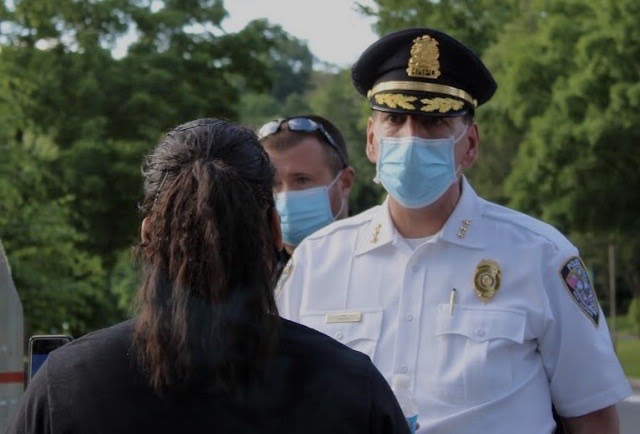
2016. Trump’s rise to office kickstarted a transition in America, a moment of true division. Modern-day politics had never seen such distaste for the “other side,” such a lack of trust and empathy. Emotions were high and tension was stirring, leading to a revolution brewing slowly under the surface.
The introduction of the coronavirus in early 2020 left millions sick and countries worried. Death had fallen upon us, and swift actions were being taken… except in the U.S., where distrust and conspiracies spread like wildfire. Talk of the economy collapsing, lost jobs for millions and in turn loss of healthcare, “stay home” warnings left to fall upon homeless ears, deaths upwards of 150,000, and political unrest has paved the way for this revolution, a rebirth, and dare I say, a new renaissance.
The Plague had done the same: amplifying issues in daily life that ultimately led to a transitional period of thinking and creating. Art and science were at the forefront, propelling people into a time where intellectual thinking was encouraged and change was inevitable.
Art has changed shapes these days, carrying undeniable purpose and weight, it’s everywhere we turn; showing up on social media and pavement, in the form of pictures and videos. Many artists took to Instagram to spread awareness and information, even recreating pictures taken at protests. A big idea within art in the Renaissance was naturalism, depicting things as they are. This parallels in the way these pictures show the raw, and sometimes hard to swallow, truth.
Individualism became a popular concept back then, and now collectivism takes the stage. This was first shown in mask-wearing to keep others safe. Non-mask wearers flaunted their individualism and selfishness, further dividing the nation, foreshadowing what was to come.
The death of George Floyd became national news, and collectivism seemed to be as contagious as the virus. Solidarity in the form of this movement grew significantly. More white people than ever joined and fought for black lives. The collectivism reintroduced by the pandemic has grown into something much bigger: empathy and willingness to change.
This newfound empathy for others stems from humanism, which then meant to focus on people rather than material things and to elevate humanity to the best of it’s potential. An idea derived from this type of thinking was that the people should stray from morals given to them by religion, and they should create their own set of morals as an individual. Today, this takes form as morals and beliefs given to us by the government and powers associated, and how we should stray from the notion that they are always good and have our best interest at heart. We are questioning what they taught us and why, manufacturing our own opinions rather than having them handed to us by people in power. This can be achieved through education.
Education is still at the forefront now as it was back then. Public libraries grew in numbers during the Renaissance, prioritizing education for all. With social media, this has shown to be a parallel in the way that new and largely unknown information has become popular on social media in the form of infographics and bite-sized tidbits.
Oftentimes, this information goes against what we were taught. History classes use white-washed stories, which are now being contradicted by the truth. Our minds need to be open and willing to challenge everything we know to move forward, comparable to the core idea of the Renaissance: undoing former beliefs so we can achieve a better society.
It’s hard to believe this movement won’t end with change. Social media has shifted focus. Beliefs being challenged, new ideas forming. Political views changing, conversations being had. Donations and signing petitions, arrests and convictions. Protests haven’t stopped since Floyd’s death, 89 days and counting.
One can only hope this is a rebirth.






